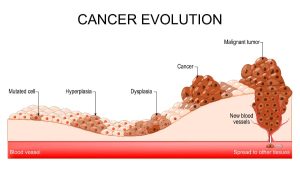
What Is Biomarker Testing for Lung Cancer?
Biomarker testing is the evaluation of samples of a patient’s tumor, blood, or both to identify the genetic mutations responsible for the development of cancer,
HIPAA Alert: Potential Data Breach Learn More
Questions on Oncology, Hematology and/or Infusion Clinical Services due to COVID-19 Crisis – CALL 833-698-1623
Important Information for Our Patients Regarding the Coronavirus.
RCCA Providing Area Cancer Patients with Access to Care During Coronavirus Outbreak
RCCA Offering Patients Virtual Visits During Coronavirus Pandemic
Biopsies play a crucial role in the diagnosis of cancer. By providing pathologists with bodily tissue to examine under a microscope, biopsies can confirm suspicions raised by clinical findings, blood tests, and imaging studies. They also provide key information on the type, severity, and extent of a person’s cancer, enabling physicians to make individualized treatment decisions. When pathologists identify cancerous cells in prostate tissue obtained by biopsy, one of the ways they report their findings is by calculating a Gleason score. The score provides a uniform way to characterize the cancer and to indicate how quickly it is likely to spread.
The medical oncologists of Regional Cancer Care Associates (RCCA) consider the Gleason score, as well as several other factors, to formulate highly individualized treatment plans when delivering prostate cancer care at locations throughout New Jersey, Connecticut, Massachusetts, and the Washington, D.C., area. Here, RCCA experts discuss the Gleason scoring system and how it is used to plan treatment for prostate cancer.

One of the main metrics for evaluating cancer is its grade. This number describes how cancer cells appear under a microscope, including how different they look from normal, healthy cells. Determining cancer grade enables oncologists to predict how quickly the cancer is likely to grow.
Traditionally, prostate cancer grades are based on the Gleason grading system. This system is named after Dr. Donald Gleason, a pathologist who developed the scoring system in the 1960s. Dr. Gleason discovered that prostate cancer cells fall into five distinct patterns as they evolve. These patterns help pathologists determine exactly how much the cancer cells have mutated, allowing a more precise understanding of a tumor and its development.
The Gleason score is determined by examining tissue obtained from a biopsy. During this procedure, the physician uses a hollow needle to take a small sample of tissue from the tumor. This sample is then evaluated in a laboratory to confirm the presence of cancer and learn more about its characteristics. The Gleason score is included in the final pathology report, along with other vital information.
Pathologists calculate Gleason scores by studying tissue samples under a microscope. They grade each sample on a 1-to-5 scale based on how abnormal it appears when compared to normal cells. The higher the grade, the more abnormal the cells in the sample look:
Cancer spreads outward, with newly affected cells gradually becoming more abnormal over time. This can create multiple areas of prostate cancer with different grades. Pathologists select the two largest cancerous areas, adding each area’s grade together to determine an overall Gleason score, also called a Gleason sum. For example, if the largest cancerous area is Grade 2 and the next largest is Grade 5, the Gleason sum is 7. Sums are divided into three groups:
The final biopsy report will include the overall grade, as well as whether any cells at Gleason grade 5 are present. Even a small amount of grade 5 cells can put a patient at higher risk for recurrence, making this important information for treatment planning.
Though the Gleason scoring system is largely effective, it has a few problems. The first is that the lowest score pathologists will assign is a 6. Because Gleason scores can range from 2 to 10, grade 6 may sound more serious than it is. This can cause unnecessary stress for the patient.
Another issue is that the three groups described above are fairly broad, which limits their usefulness to some extent. For example, a man with a Gleason score of 3+4 = 7 and one with a score of 5+2 = 7 both have intermediate-grade cancer. The first, however, has fewer highly abnormal cells and likely will respond better to treatment than the man who has Grade 5 cancerous cells. Similarly, men with a Gleason score of 8 generally will fare better than those with scores of 9 or 10, even though all three are considered to have high-grade prostate cancer.
To address these issues, pathologists have modified the system into grade groups. These range from grade 1 (most likely to spread slowly) to 5 (most likely to spread quickly):
Eventually, the Grade Group system may replace the Gleason system. Currently, however, the systems are included side-by-side on most biopsy reports.
The grade of prostate cancer, whether recorded as a Gleason score or grade group, is an especially important factor when it comes to predicting the cancer’s behavior and planning treatment. It’s not the only factor to consider, however. Biopsy reports contain other information that is also useful for planning prostate cancer treatment, including:
This information provides a more complete understanding of the patient’s prostate cancer and of his likely response to various treatment options.
Once biopsy testing and other assessments are completed and final reports for those evaluations are provided, the patient and his cancer care team can begin planning treatment. Options include:
In the early stages of prostate cancer, the tumor generally grows very slowly. Treatment may not be an urgent concern. Medical oncologists often simply monitor low-grade cancers, especially in low-risk or elderly patients. If the tumor shows signs of worsening, treatment may begin.
Like watchful waiting, active surveillance entails not immediately initiating treatment. However, as its name implies, this option involves a more proactive approach to monitoring the patients, such as with regularly scheduled biopsies and imaging studies.
Cryotherapy is a treatment option for very early-stage, low-grade prostate cancers. During this procedure, doctors inject extremely cold gases into the body. These freeze and kill cancer cells, eliminating the tumor without requiring surgical removal.
Radical prostatectomy is the primary surgical procedure used to treat prostate cancer. It involves removing the entire prostate and surrounding tissues. It is often effective, especially if cancer has not spread outside the prostate. However, it may result in bladder control problems or erectile dysfunction.
Radiation therapy uses high-energy rays or particles to kill prostate cancer cells with no or minimal damage to nearby healthy tissue. The radiation may be delivered by means of a beam directed at the body from a machine called a linear accelerator or through a closed source that is placed in the body at or immediately adjacent to the site of the cancer. In some cases, radiation-delivering drugs knowns as radiopharmaceuticals are infused intravenously and then target and attack cancer cells.
For high-grade, later-stage prostate cancer, chemotherapy may be used. This treatment uses strong drugs that circulate through the entire body to eliminate cancer cells at their source, and anywhere they may have spread. It may also be used to shrink a tumor before other treatments are provided.
Prostate cancer often relies on male hormones called androgens to grow. Hormone therapy can reduce levels of androgens or interfere with their ability to help prostate cancer cells survive and spread.
Immunotherapy harnesses the body’s own immune system to identify and attack cancer cells. Different forms of immunotherapy are employed in prostate cancer treatment, although their use is generally reserved for later-stage cancer.
Regional Cancer Care Associates offers prostate cancer treatment at more than 20 locations across New Jersey, Connecticut, Massachusetts, and the Washington, D.C., area. Our medical oncology team has experience in treating a wide variety of cancers and blood disorders, using targeted treatments where appropriate to ensure the best results. Contact us to learn more about Gleason scores or to request an appointment for treatment today.
For more information or to schedule an appointment,
call 844-346-7222. You can also schedule an appointment by calling the RCCA location nearest you.

Biomarker testing is the evaluation of samples of a patient’s tumor, blood, or both to identify the genetic mutations responsible for the development of cancer,

Medical research has made tremendous strides in improving how oncologists understand and treat cancer. One of the most exciting developments is the use of radiopharmaceuticals.

Prostate cancer is a common and fairly complex disease. Though it typically grows very slowly, there are times when prostate cancer can develop suddenly and

Regional Cancer Care Associates is one of fewer than 200 medical practices in the country selected to participate in the Oncology Care Model (OCM); a recent Medicare initiative aimed at improving care coordination and access to and quality of care for Medicare beneficiaries undergoing chemotherapy treatment.